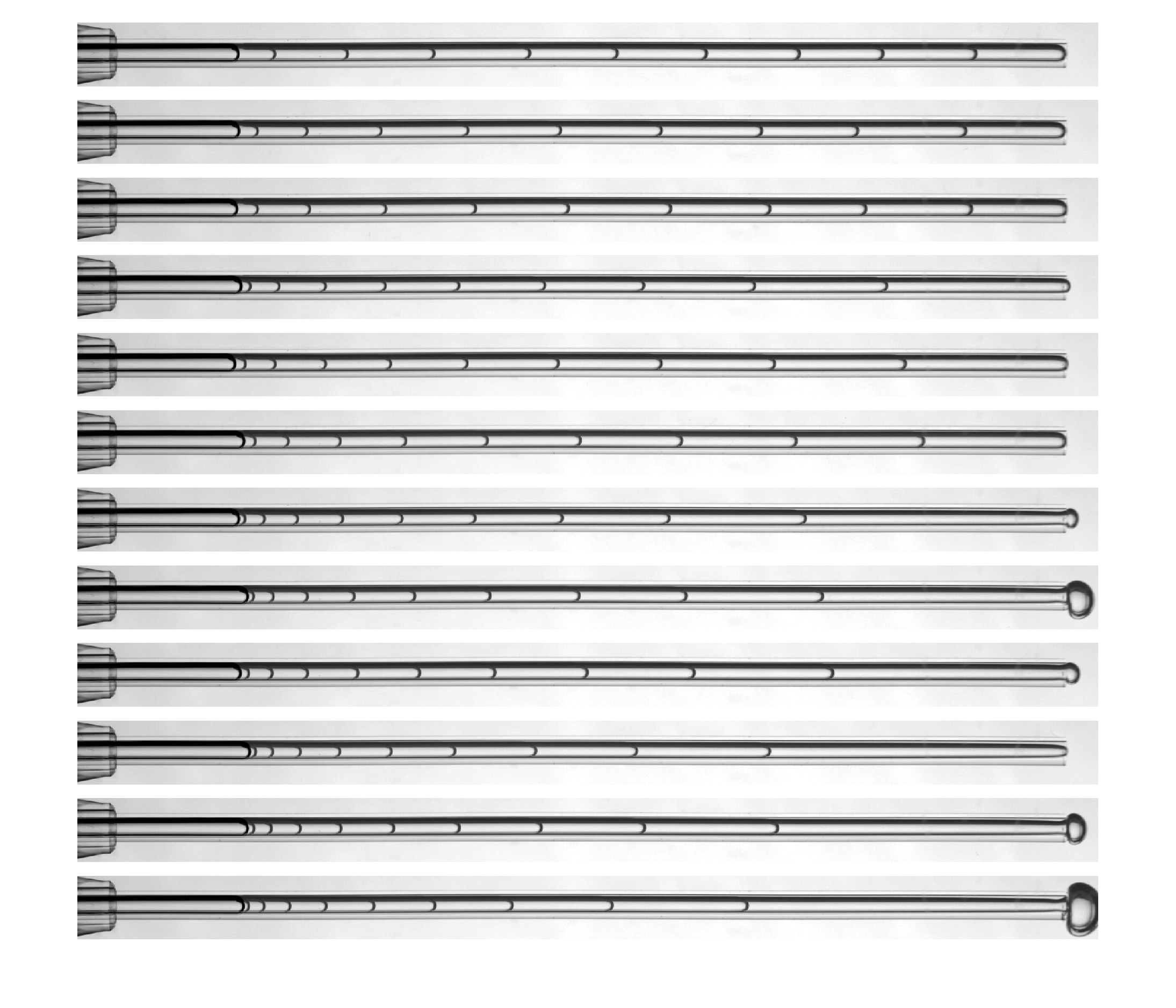Using gas to drive a viscous liquid out of a confined geometry, such as from a narrow tube or channel or from a porous medium, is a classical problem in fluid dynamics. It is also a common feature of many practical applications, including the operation of fuel cells, the subsurface storage of carbon dioxide, and even the squeezing of ketchup out of a bottle. In all of these scenarios, the compression of the gas provides the driving force and the viscosity of the liquid provides the resistance. However, both the amount of compression and the amount of resistance are coupled to the amount of liquid that has been displaced. The tight coupling of these basic mechanical ingredients leads to surprising behavior, even in the simplest of settings. We studied this problem in a controlled way by compressing gas to drive oil from a capillary tube. Our results show that a steady rate of squeezing can generate a strongly unsteady flow, and there exists a critical threshold above which the flow abruptly transitions from smooth squirting to a violent burst.
Read the paper or the preprint
Featured in: University of Oxford | Department of Engineering Science | American Physical Society | The Daily Mail | Physics World | Ars Technica | FYFD | etc.
